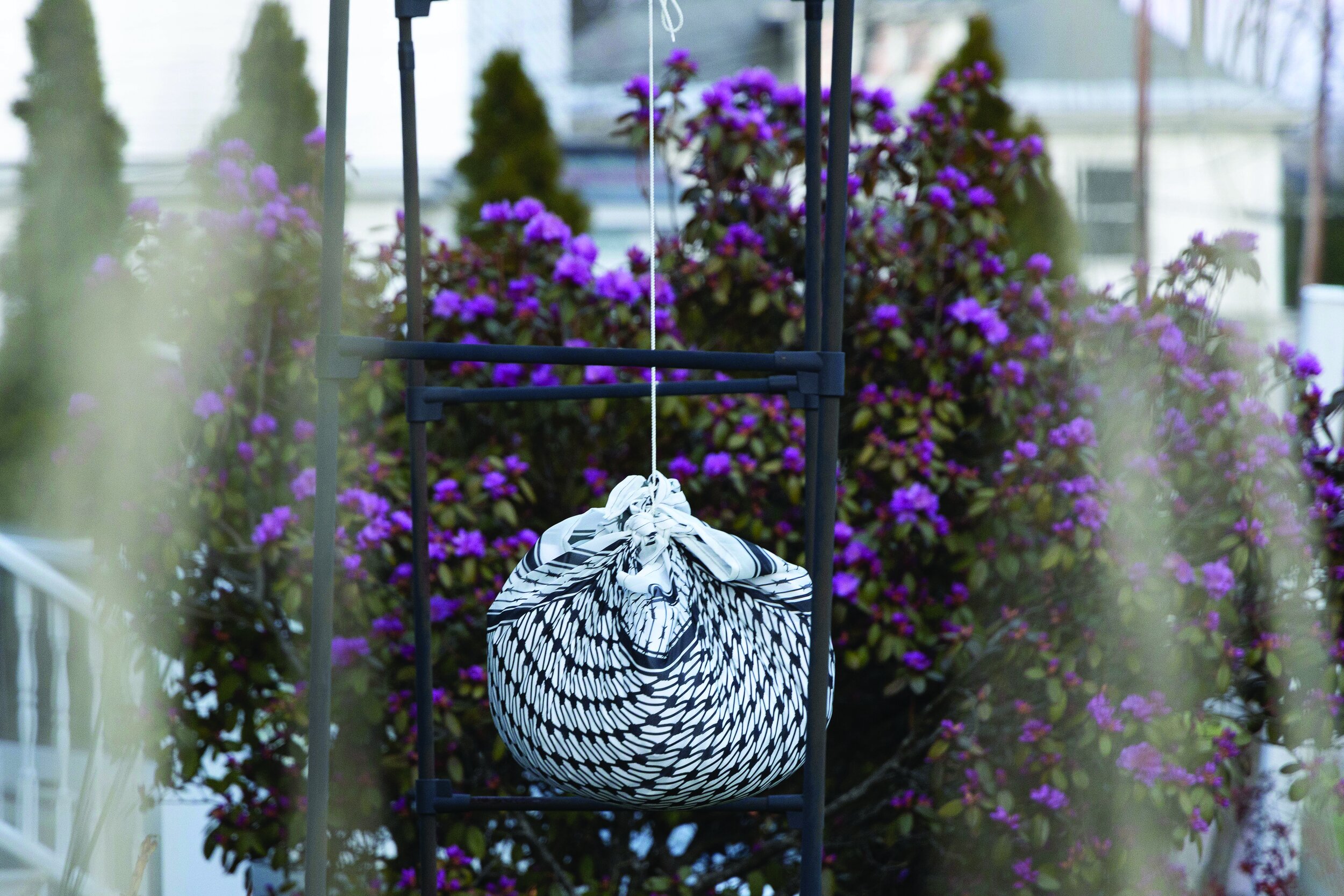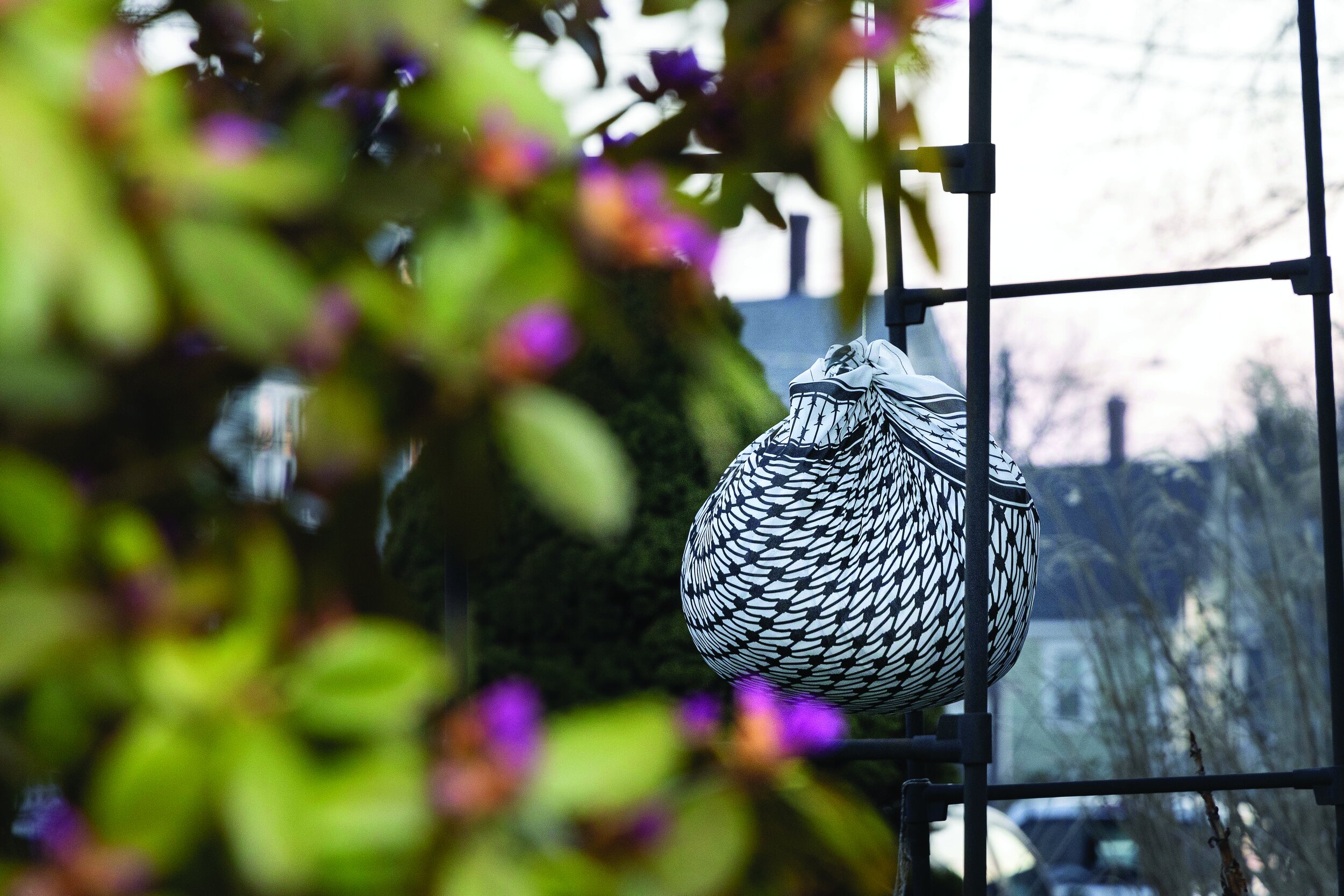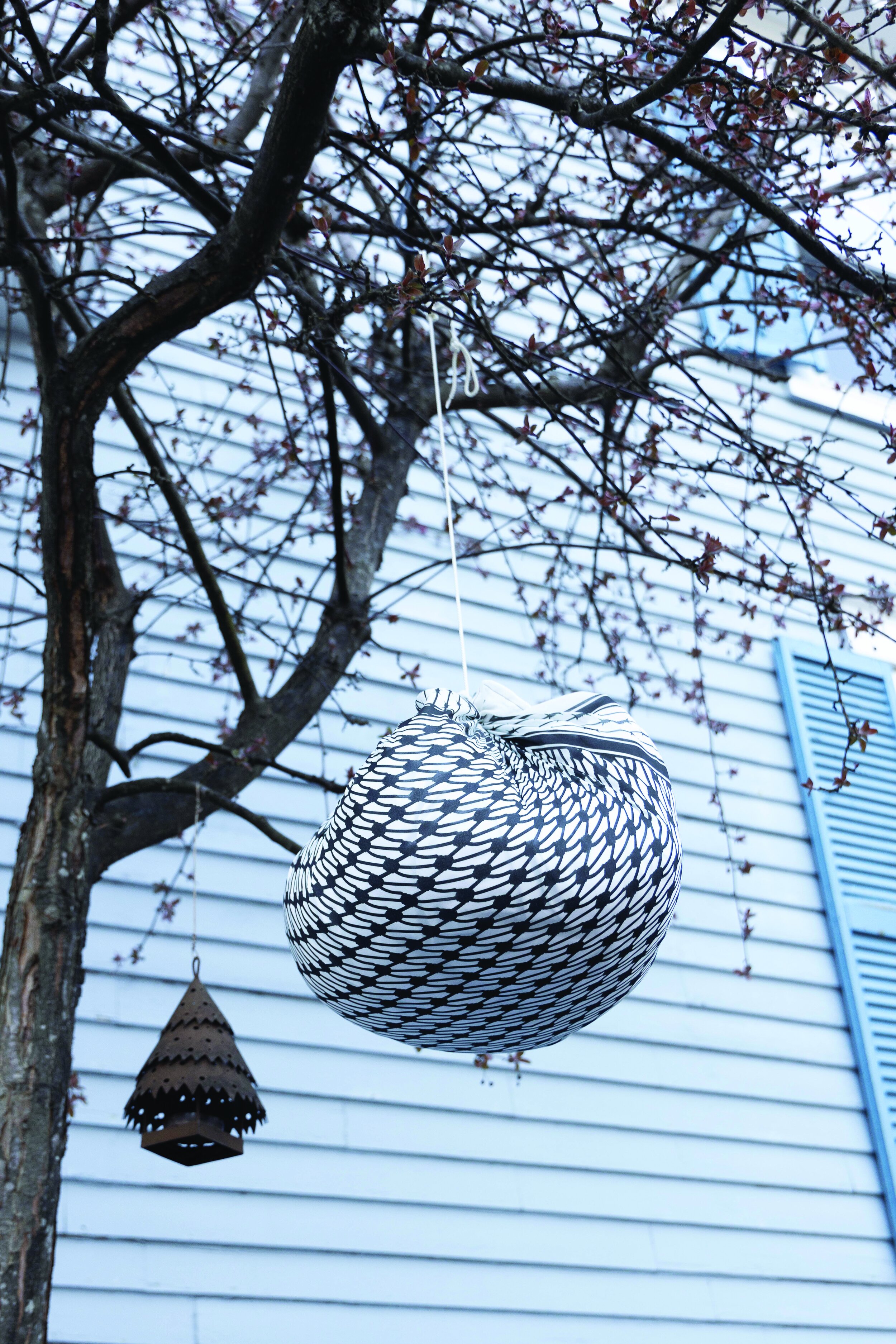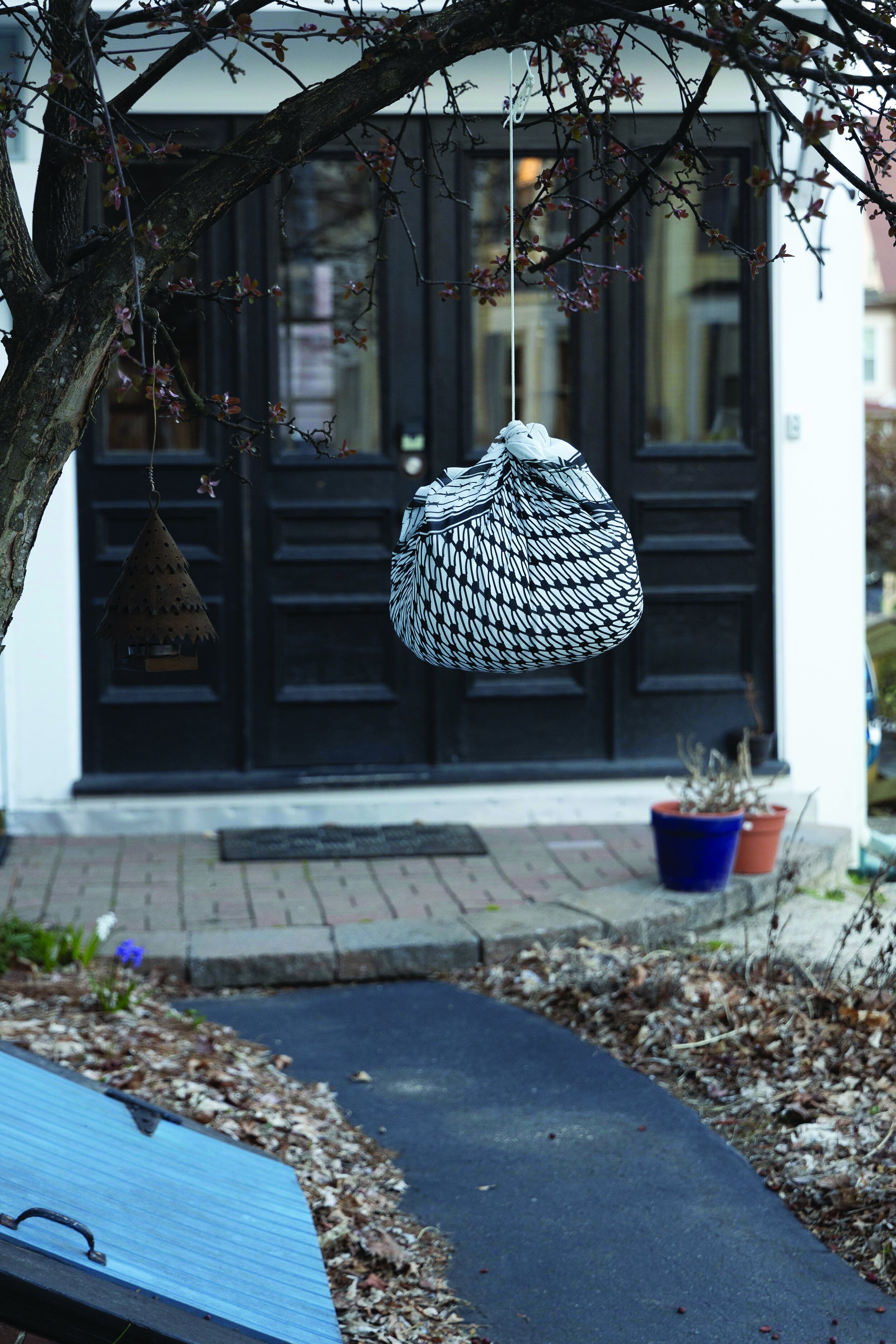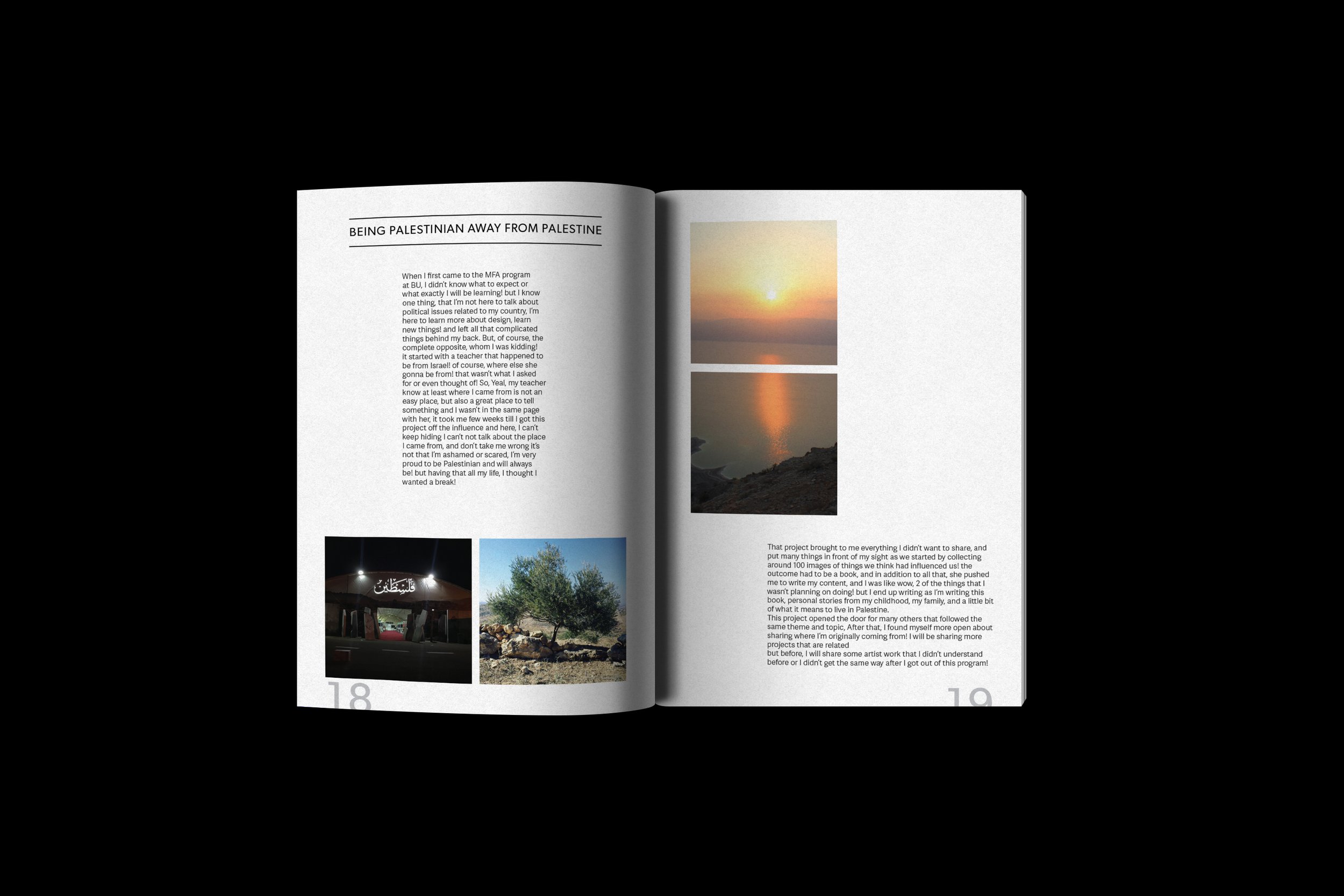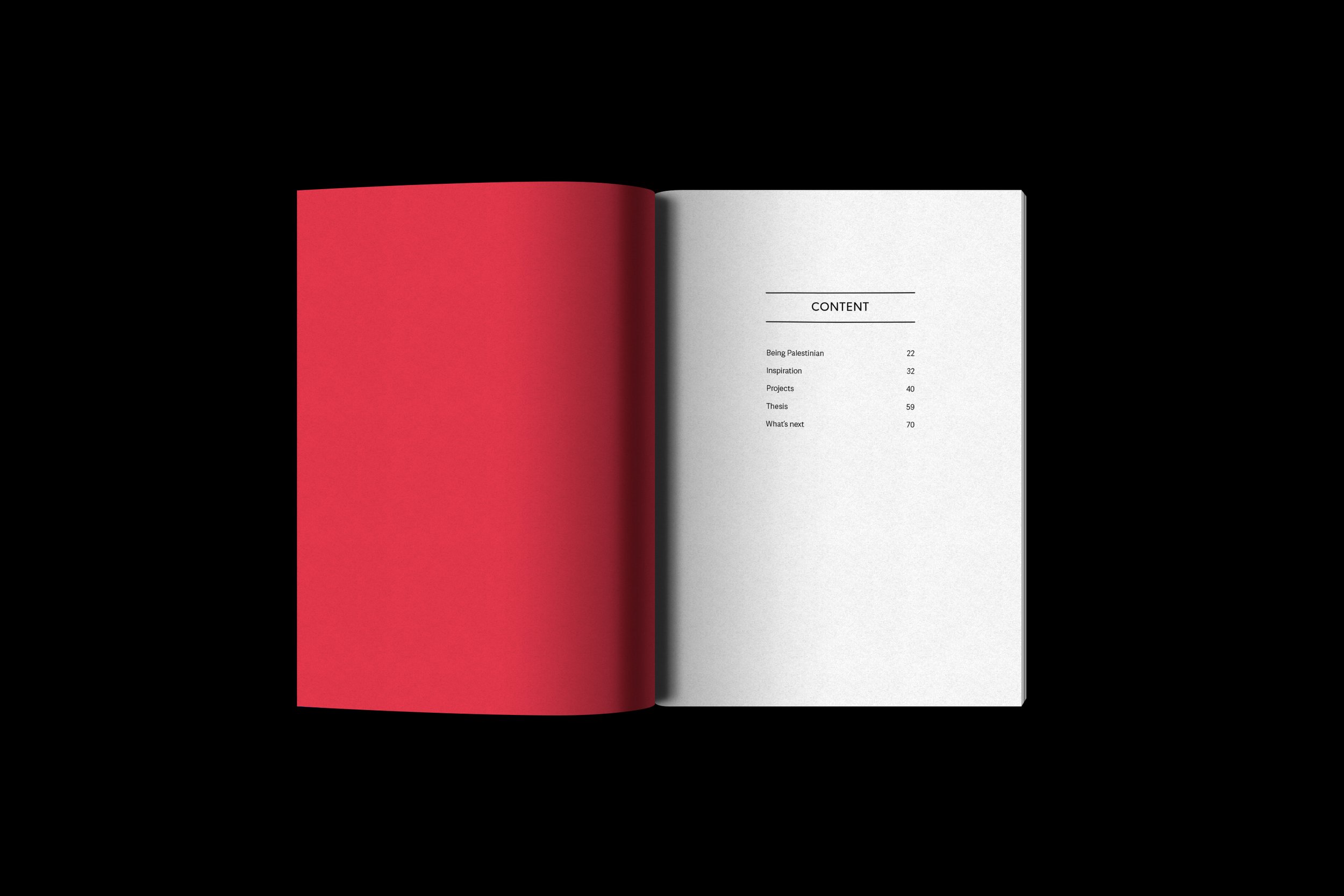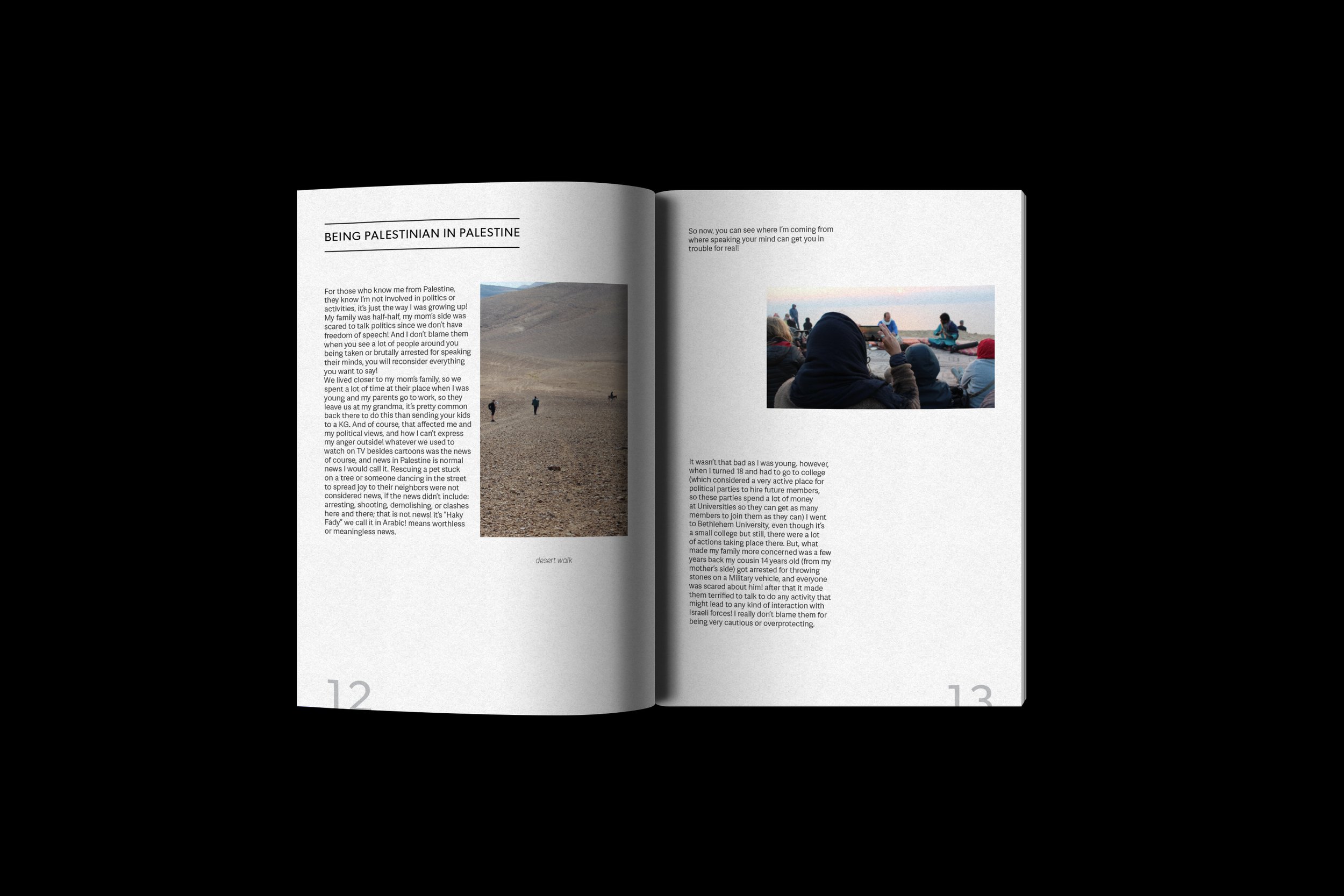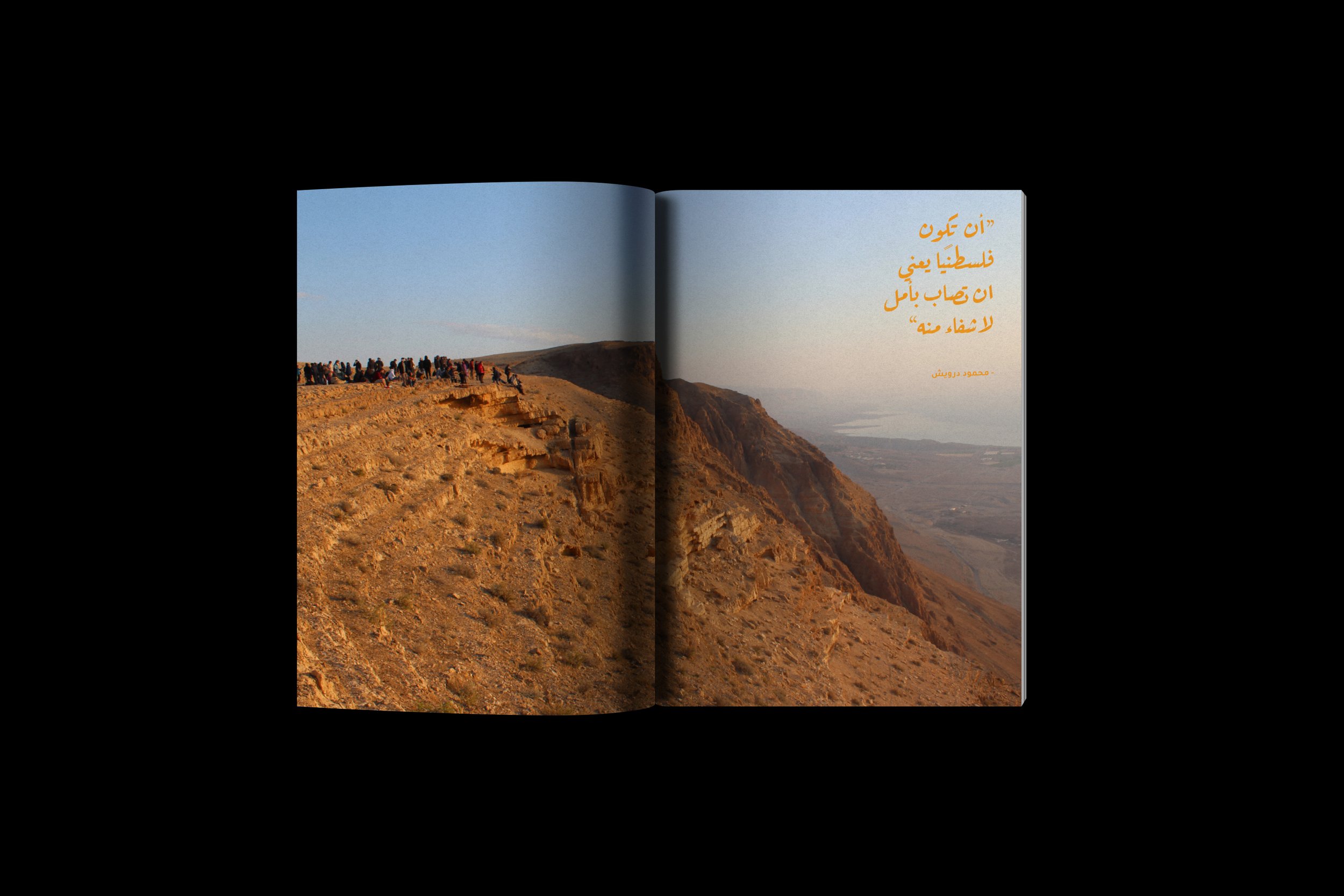Curating the Palestinian narrative by exploring the collective memory of Palestine over the last 100 years.
How have decades of conflict shaped the Palestinian collective memory, a story handed down from generation to generation? There are two Palestines: a war-torn, conflict-ridden country, and the Palestine I grew up in. This thesis explores the internal and external conflict’s impact on the Palestinian identity. By focusing on the experiences of Palestinians not captured in historical facts, I want to reveal a culture that represents struggle, resilience, and hope. Through symbolism, I relate historical moments and memorable artifacts cherished by Palestinians. Additionally, other creative expressions of the Palestinian narrative, such as the novella Returning to Haifa by Ghassan Kanafani inspire and depict a memory visualized through imagination.
I redesigned the shapes of the original Kuffyia, replacing the fishing net with the map of historic Palestine. And I replaced the waves with barbed wires that are widely used in the occupied Palestinian territories to restrict and prevent Palestinian movement.
In line with thinking about what it feels like to flee your home hastily with only a few things wrapped in a scarf, I used the redesigned Kufiya to tell the story of those who became refugees in 1948. I hung the makeshift sack in random places, like an empty house and an empty street to symbolize the continuous movement and exile of Palestinian refugees. The Kufiya sack fits somewhat awkwardly in the environments they are photographed in, as though it does not belong there. This echoes the sentiments of many Palestinian refugees who are still unable to fully assimilate in their new environments, be it refugee camps in the occupied Palestinian territories or overseas in exile.
The kufiya is now mass-produced and can be bought here
Featured at La Biennale Venice by Palestine Museum US
Featured at Boston University MFA online thesis show
